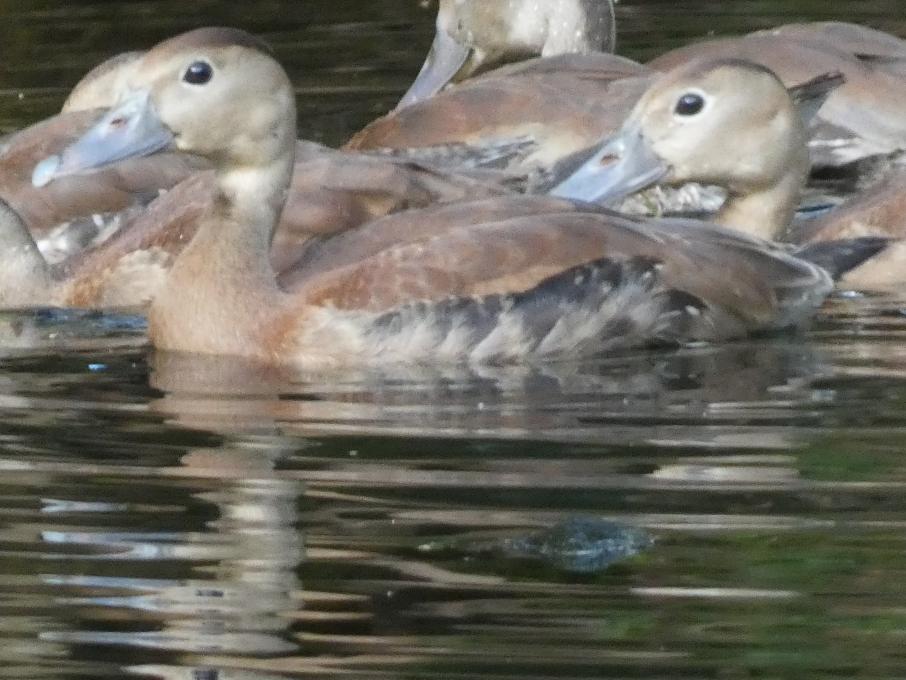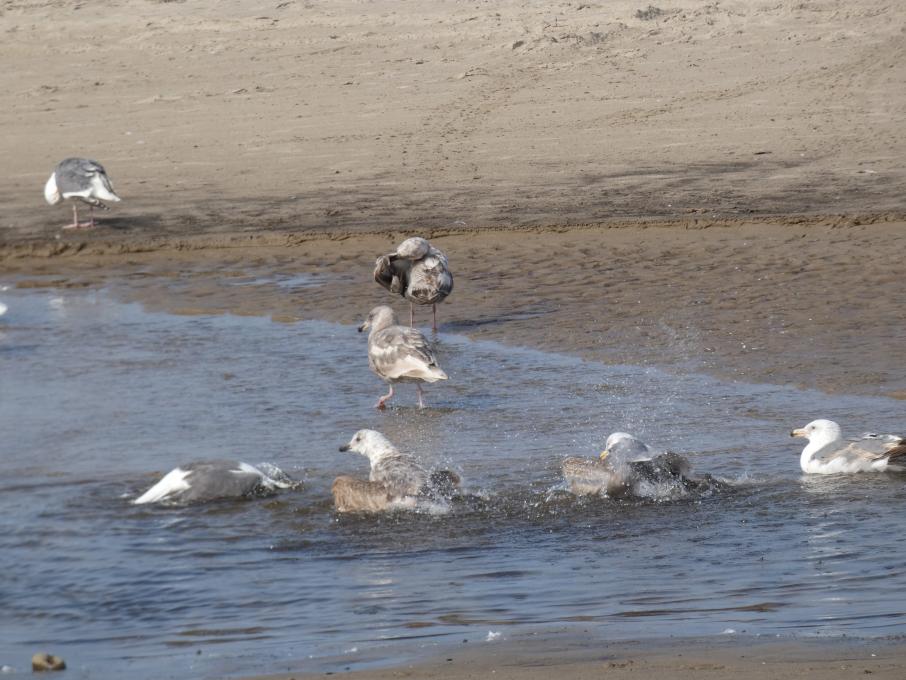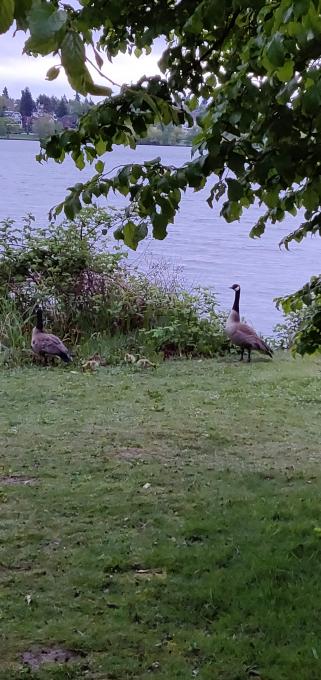Stephanie
Forum Replies Created
Viewing 11 posts - 1 through 11 (of 11 total)
-
StephanieParticipantWhat appeals to you about this journaler’s style? I really liked the last journal. I can't draw at all and have an incredibly busy life at the moment. My word for this year is "notice" what if I just drew a petal, a rapid sketch of the crow sitting outside my office window? Something I could do in 5 minutes. What would you think are the goals of this journal? The goal seems to be regularly noticing and capturing what the journaler noticed. The daily discipline of painting something is appealing to me, though maybe 3 - 4 days a week might be more realistic. A page a week? What surprised you about the content? the amazing detail she captured with watercolor. She made it sound like these pieces didn't take her long, but they look very time consuming. What elements has this journaler included that you might want to include in your journal? having many images on a page, regular documentation - daily, weekly or monthly. I'd want to add brief descriptions as she did in the monthly pages.in reply to: Style Your Journal Your Way #939515
-
StephanieParticipantI'm on vacation this week in New Orleans and had the opportunity to try both a sit spot and car blind. I caught a Blue Bird from my car. I was surprised at how easy it was to just sit and watch what happened from the sit spot I chose in Audubon Park in New Orleans. I selected the spot when I saw a wood duck and her juvenile. Lots of birds and ducks came by. In the end, I got to see these Black Bellied Whistling Ducks, which I was really hoping to see while I was here.
 in reply to: Practice Gaining an Audience with Birds #833985
in reply to: Practice Gaining an Audience with Birds #833985 -
StephanieParticipantThe next steps I'd like to take in my birdwatching journey is to improve my photography skills so that I can continue my quest to document the birds I see every day.in reply to: Activities: Helping Birds in Your World #828111
-
StephanieParticipantI made a new year's resolution this year to make one eBird report every day. Actually, I started in mid December after only hearing about eBird for the first time in November. As of this writing, I have a 214 day streak! I try to take pictures that I add at least a couple of times a week and, since the new Merlin Song ID, I've been adding audio too. But sometimes, on those back to back meeting days, I just sit by my living room window during a meeting and log what I see out the window. It's pretty addictive. On a side note, there are people who check your eBird submissions to make sure they are accurate. When I first started logging and they said things like "Dear Stephanie, thank you for submitting to eBird , but that sparrow that you thought you saw was probably a warbler". At first, I was a bit insulted. But I realized that I really had only been birding for a couple of months, so what did I know. I decided to use my phone camera to record every bird that I saw and reported each day, even crows. That way, I could get some useful feedback on my bird IDs and have proof when I actually saw something unusual. It worked. I've learned a ton from the feedback and have struck up a friendship of sorts with the 2 or 3 guys who usually give me feedback.in reply to: Activities: Keeping Track of Your Birdwatching #828110
-
StephanieParticipantI live in an urban area just a few blocks from a large park and a lake. My regular walk starts with a neighborhood, where I often see black capped chickadees, dark eyed juncos and American Robins. Then I enter the park and see song sparrows, hummingbirds and Northern Flickers. Then as I walk along the lake, I'll see mallards, Canada Geese and, now in summer, barn sparrows or in winter many species of duck. There are also lots of red winged blackbirds. Then I return home through the neighborhood, seeing the common birds, like Rock Pigeons, Glaucous Winged Gulls flying from the lake to the local Puget Sound, and, of course the ubiquitous American Crow. All this in a 20 minute lunchtime walk! I'm really fortunate to live where I do.in reply to: Activities: Exploring Bird Habitats #823536
-
StephanieParticipant
 I am visiting the Oregon Coast and observed some Western Gulls (at least, I think they are Western Gulls) bathing. This is a fresh water stream and they are bathing where the stream meets the beach and the ocean. I counted 114 gulls there. It was like they were having a party. They really seemed to be enjoying themselves. in reply to: Activities: Noticing Behaviors #822362
I am visiting the Oregon Coast and observed some Western Gulls (at least, I think they are Western Gulls) bathing. This is a fresh water stream and they are bathing where the stream meets the beach and the ocean. I counted 114 gulls there. It was like they were having a party. They really seemed to be enjoying themselves. in reply to: Activities: Noticing Behaviors #822362 -
StephanieParticipant
 Browsing through my Birds of Seattle book, I decided to go with the Pileated Woodpecker, as my experience with it really matched our lesson. I was walking through the woods at Golden Gardens park and noticed a downed tree that had been practically hollowed out with oval holes. I wondered what had done the digging. I wondered about beavers. In reading up on this large woodpecker, I learned that such holes are the often the only evidence of the bird in the area.
A while later, I heard a distinctive tap-tap-tap of a woodpecker pecking away. But I couldn't see it from where I was. Fortunately, I was able to circle around the small pond I was standing by and from the opposite side was able to see and photograph this amazing bird. If you'd like to hear and see it in action, you can watch this short video that I captured here. in reply to: Practice Understanding Birds for Better Photos #817911
Browsing through my Birds of Seattle book, I decided to go with the Pileated Woodpecker, as my experience with it really matched our lesson. I was walking through the woods at Golden Gardens park and noticed a downed tree that had been practically hollowed out with oval holes. I wondered what had done the digging. I wondered about beavers. In reading up on this large woodpecker, I learned that such holes are the often the only evidence of the bird in the area.
A while later, I heard a distinctive tap-tap-tap of a woodpecker pecking away. But I couldn't see it from where I was. Fortunately, I was able to circle around the small pond I was standing by and from the opposite side was able to see and photograph this amazing bird. If you'd like to hear and see it in action, you can watch this short video that I captured here. in reply to: Practice Understanding Birds for Better Photos #817911 -
StephanieParticipantBirds that are here all year Canada Geese- even though I live in Seattle, not Canada, the Canada Goose is a year round resident at my local lake. They are huge and messy and aggressive on land. They seem much less vexing when they are on the water. Black Capped Chickadee - mentioned in the opening video to this module, this little bird is a year round resident and is pretty easy to see and hear in neighborhoods. Glaucous Winged Gull - I live near the water and this gull is by far the most common in the area. Birds that Migrate - I took a waterfowl class and lots of ducks come to the Puget Sound area from Canada and Alaska to overwinter. Horned Grebe - a small slender diving duck that I've confused with the Western Grebe. Brant - a large elegant duck that I've seen in recent weeks in large flocks that challenged my bird counting abilities. American Wigeon - A medium sized duck that I often see hanging out in large flocks.in reply to: Activities: Different Seasons, Different Birds #804882
-
StephanieParticipantActivity 1: Pick a birdwatching spot in your area. It could be out your window, at a local park, or a nearby nature preserve. Or try watching a BirdCam—feeder cams are an especially good choice for seeing different species! Just watch birds for a good 15 minutes. Make a note of all the birds you see or hear.<p> I sat at Shilshol Bay Marina in Seattle for about half an hour. It was late in the afternoon, around 4pm (next time I'll go early in the morning). I saw the following * rock pigeons * Glaucous Gulls * American crows, lots of them * a small brown bird that I could not clearly identify. I noted the following: smaller than a crow, larger than a sparrow, round body; longish tail, beak slightly smaller than head; its flight pattern had a rapid beating then short glide, bobbing up and down. A chirping call.<p> I was feeling pretty disappointed with this visit, as I could have seen all of these birds from my yard (well, I might have had to walk down to the corner store to see the pigeons). Then, just as I was preparing to go, I saw what I later realized was pigeons mating - https://youtu.be/5Moiesnn7bI.<p> Activity 2: Use Merlin’s “Most Likely” species feature to find out what birds you are likely to see locally today. If you can, go out and try to find some of them. Be sure to listen to their call and song on Merlin. Maybe it’s a song you’ve heard before, but you didn’t know who made it!<p> I've decided to make this activity my summer project. I'd like to learn more about 3 birds a week from the Most Likely list in my area. There are 195 birds on the list in Merlin. I will start with the 16 birds on the Common Urban Bird list from the Seattle Audubon (which I just joined) - http://www.seattleaudubon.org/sas/About/Conservation/UrbanHabitat/UrbanHabitatandBirds/CommonUrbanBirds.aspx.in reply to: Activities: Local Bird Exploration #719230
-
StephanieParticipantActivity 1: Look for two birds (either outside or on Bird Cams) that you can tell apart just by shape. Try to identify them using Merlin or a field guide. Share your findings in the discussion. My two birds were a rock pigeon and a Glaucous-winged Gull, which I've always known as a seagull. The shapes are actually soemwhat similar between the two birds. Though the Gull is larger than the pigeon, both have large bodies and smaller heads. The gull has a long beak that is about the same size as its head. The pigeon has a short beak, smaller than its head. The gull has long legs and the pigeon short legs. Activity 4: Pick your favorite bird, and see if you can describe it using at least three of the bird ID strategies (size and shape, color pattern and markings, behavior, habitat and range, and sounds). Share your description in the discussion. My favorite bird at the moment is the red winged blackbird. This bird has a really lovely song that captured my attention. The bird is smaller than a crow and larger than a sparrow. It has a roundish body and no discernible neck. it has a short, stout beak. The ones I see on my daily walks are solid black with a red cap on its upper wings, trimmed with yellow. The two I regularly see are in the same bushes every day. Each bush is growing over the water on a lake. I've only seen them flying or perched in the bushes.in reply to: Activities: Bird ID Practice #719227
-
StephanieParticipantI walk around a local lake every morning and was able to identify my 3 birds on a recent walk.
- Canadian Geese, with some new babies
- Great Blue Heron
- Red Winged Blackbird - this is the bird that got me interested in birdwatching. It's song is lovely.


 in reply to: Activities: Exploring Birds #696529
in reply to: Activities: Exploring Birds #696529
Viewing 11 posts - 1 through 11 (of 11 total)

 I am visiting the Oregon Coast and observed some Western Gulls (at least, I think they are Western Gulls) bathing. This is a fresh water stream and they are bathing where the stream meets the beach and the ocean. I counted 114 gulls there. It was like they were having a party. They really seemed to be enjoying themselves.
I am visiting the Oregon Coast and observed some Western Gulls (at least, I think they are Western Gulls) bathing. This is a fresh water stream and they are bathing where the stream meets the beach and the ocean. I counted 114 gulls there. It was like they were having a party. They really seemed to be enjoying themselves.  Browsing through my Birds of Seattle book, I decided to go with the Pileated Woodpecker, as my experience with it really matched our lesson. I was walking through the woods at Golden Gardens park and noticed a downed tree that had been practically hollowed out with oval holes. I wondered what had done the digging. I wondered about beavers. In reading up on this large woodpecker, I learned that such holes are the often the only evidence of the bird in the area.
A while later, I heard a distinctive tap-tap-tap of a woodpecker pecking away. But I couldn't see it from where I was. Fortunately, I was able to circle around the small pond I was standing by and from the opposite side was able to see and photograph this amazing bird. If you'd like to hear and see it in action, you can watch
Browsing through my Birds of Seattle book, I decided to go with the Pileated Woodpecker, as my experience with it really matched our lesson. I was walking through the woods at Golden Gardens park and noticed a downed tree that had been practically hollowed out with oval holes. I wondered what had done the digging. I wondered about beavers. In reading up on this large woodpecker, I learned that such holes are the often the only evidence of the bird in the area.
A while later, I heard a distinctive tap-tap-tap of a woodpecker pecking away. But I couldn't see it from where I was. Fortunately, I was able to circle around the small pond I was standing by and from the opposite side was able to see and photograph this amazing bird. If you'd like to hear and see it in action, you can watch 

